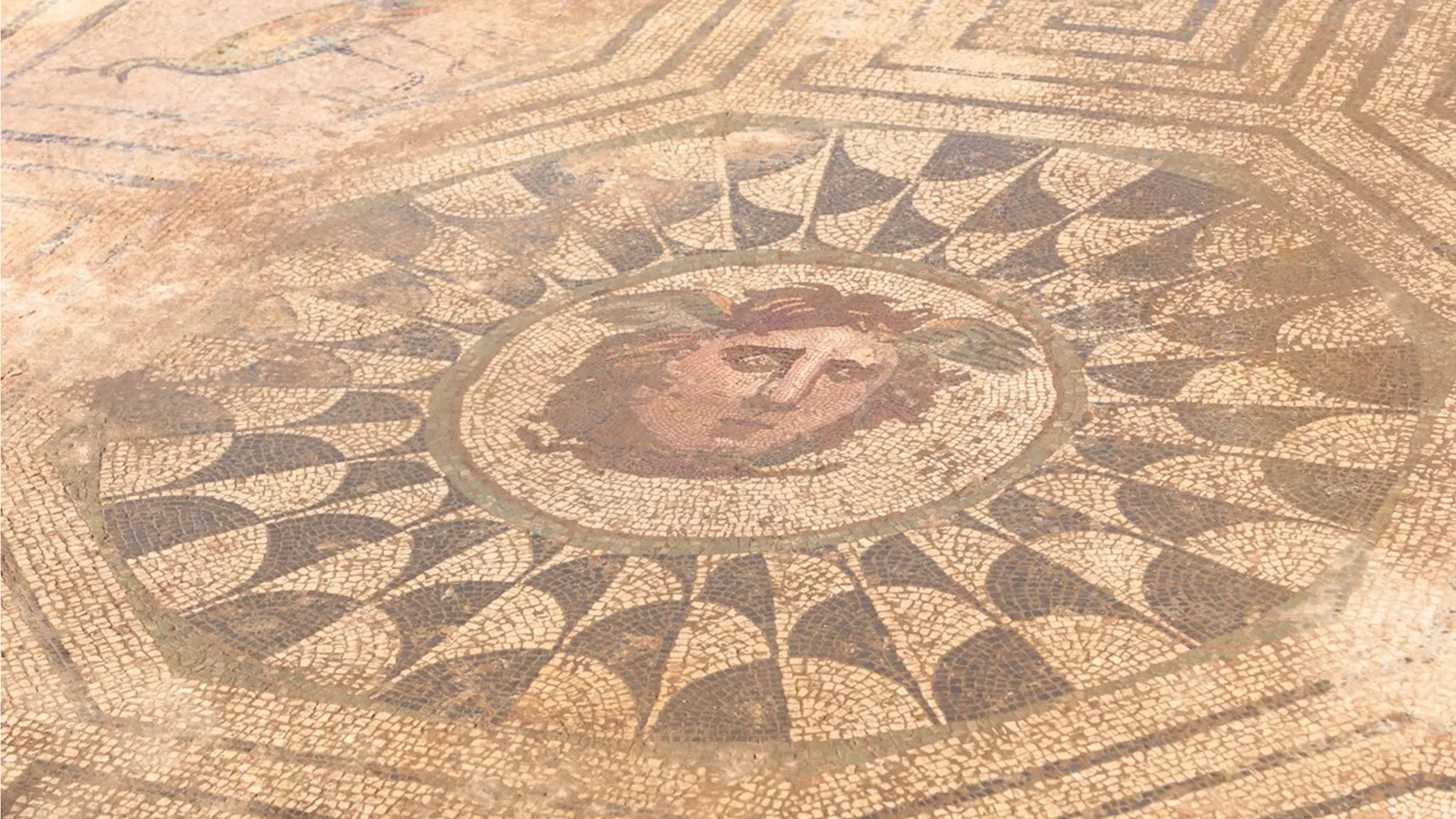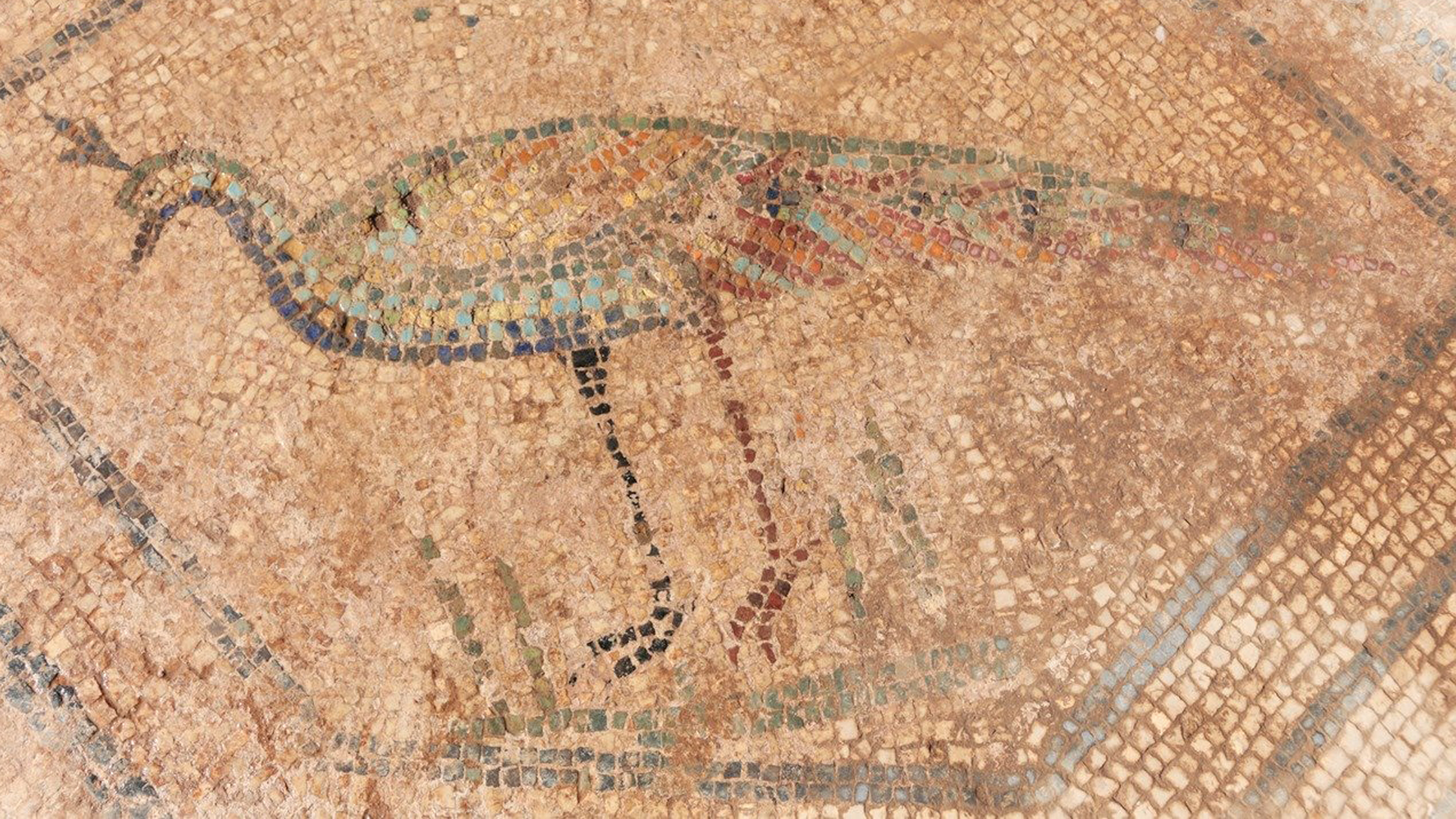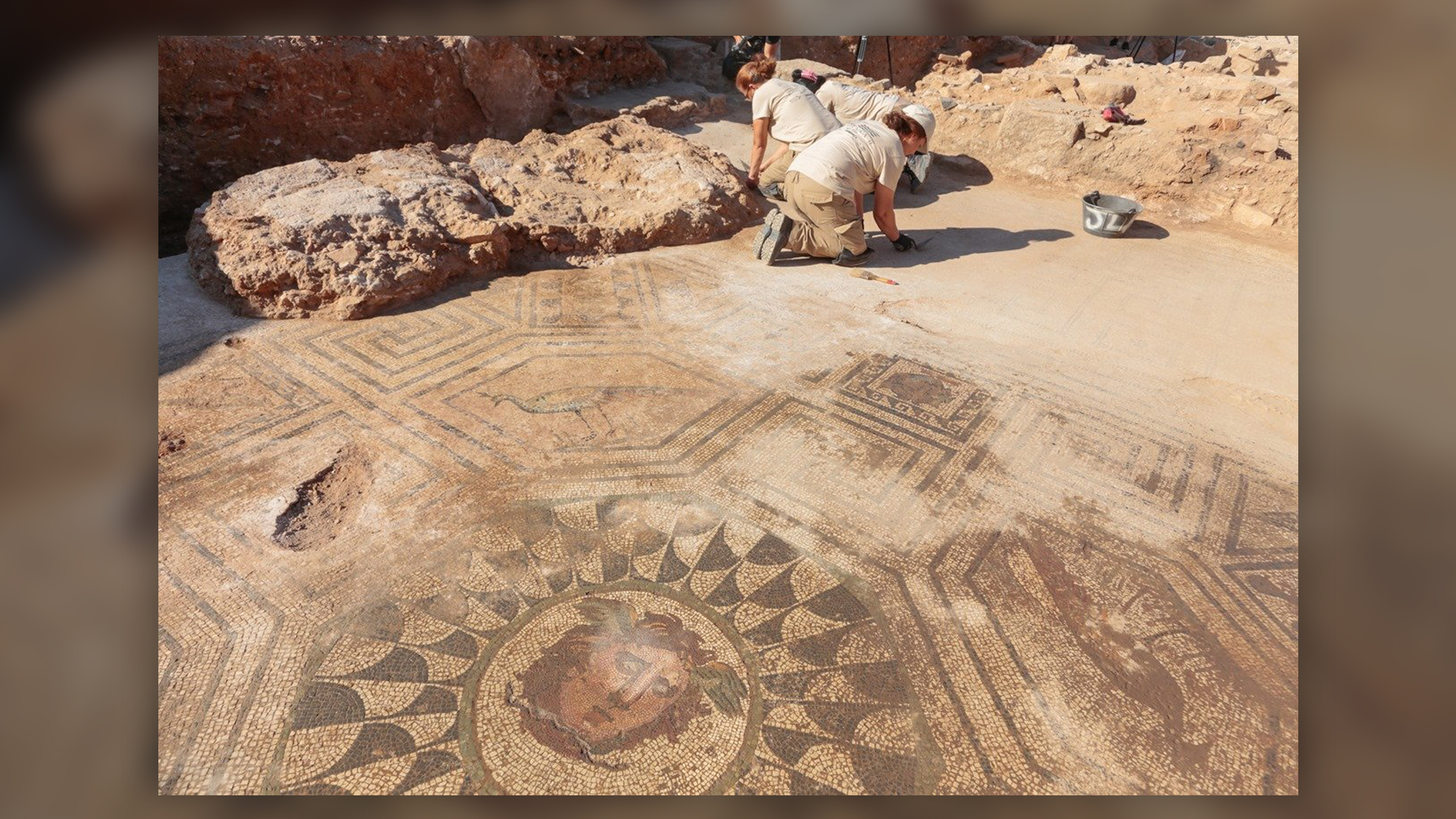
Archaeologists in Spain have unearthed an "exceptional" mosaic featuring the mythical gorgon Medusa in the remains of a lavish house from the Roman era.
The mosaic, found at the Huerta de Otero archaeological site in western Spain, depicts Medusa at the center of a patterned octagon, meant to represent the aegis of Athena, a shield or skin that held Medusa's severed head after the Greek hero Perseus beheaded the gorgon. In the mosaic, Medusa is surrounded by masks, geometric patterns and wildlife, including fish and four colorful peacocks that represent the four seasons, according to a translated statement.
The thick-browed depiction of Medusa would have served as an apotropaic, or means to repel evil, José Vargas, an archeology monitor for the Barraeca II Professional School that carried out the dig, said in the statement.

Most people think Medusa had snakes for hair and turned people who looked directly at her into stone. In early Greece, the mortal gorgon was illustrated as hideous and monstrous — sometimes with a beard and even tusks and pointy teeth. But in Roman times around A.D. 100, her snaky hair was often detailed as wild locks and she took on the features of Alexander the Great, such as having wind-blown hair and a turned head, according to the Getty Center in Los Angeles.
Related: Silver medal featuring winged Medusa discovered at Roman fort near Hadrian's Wall

In the newfound mosaic, Medusa has a round face, bulging eyes, unkempt hair, a slightly turned face and white wings coming out of her forehead, an indication that she could fly, much like the Roman deity Mercury. The fact that the mosaic is multicolored, instead of just black and white, indicates that it was crafted in the second century A.D., according to The History Blog.
The 323-square-foot (30 square meters) mosaic was found by students. Archaeologists first excavated the site in 1976, finding the remains of a Roman domus, or house. But little work was done at the site until students renewed excavation there in 2019, leading to the discovery of the mosaic this summer, according to the statement. It's likely that the mosaic decorated one of the domus's main rooms, such as the triclinium, or dining room, according to The History Blog.
This site "is of an exceptional nature due to the level of conservation of the remains and, above all, due to the ornamental apparatus that decorates the well-preserved house: not only the mosaic of the medusa but also paintings and sculptural motifs," Félix Palma, director of the Monumental City Consortium, said in the statement.
Excavations at the site are ongoing.







